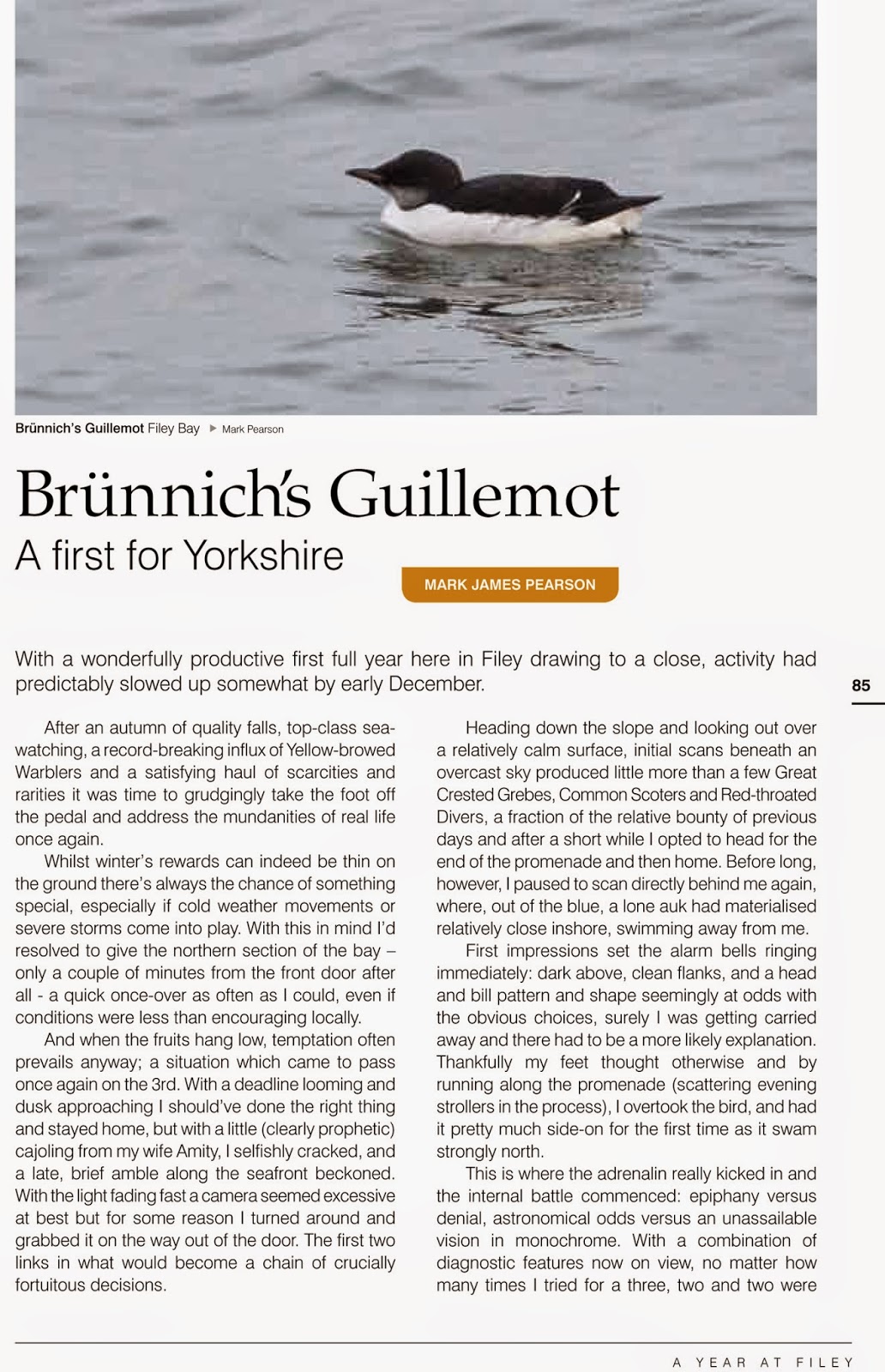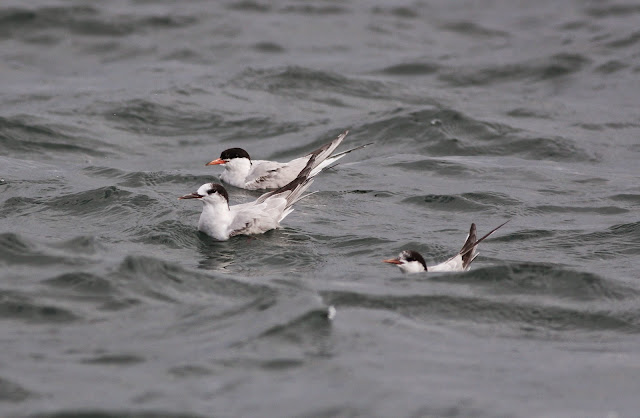 |
| Purple Sandpiper (right) and Dunlin on the Brigg |
After what was a generally quiet August locally (see
here), September 2014 began with the concern that it may follow the pattern of my previous two here in Filey - i.e., a frustratingly quiet first three quarters of the month dominated by a westerly airflow, finally kicking into gear for the final week of month.
 |
| Summer-plumaged Red-throated Diver over Carr Naze |
As it happened, I needn't have worried, and the month has already broken with type on various levels. Perhaps straying elsewhere along the Yorkshire coast is healthy after all, with vaguely guilt-tinged forays to both Flamborough (well,
the sea beyond it) and Spurn (for the excellent
Migration Festival) during the first ten days of the month providing good birds, a good craic and perhaps a subconscious burst of extra enthusiasm for the patch.
 |
| Bonxie on the Brigg. Unfortunately the victim of some kind of pollutant and clearly unwell, but still able to fly (and thus evade rescue). |
So while the
1st was spent rocking gently on a little boat off the Cape, the
2nd saw a full day out on patch. The morning was spent getting our hands dirty, creating a gravel island at our East Lea nature reserve (with the added bonus of four
Common Buzzards drifting low overhead and impatient groups of
Ruff,
Snipe and
Dunlin buzzing around our spades); the land was otherwise quiet, as was an afternoon seawatch, at least enlivened by a
Sparrowhawk arriving in-off.
 |
| An over-inquisitive young Roe Deer which took an age to finally get the message from its tongue-gesturing mum.... |
Mild and foggy conditions with a light easterly raised anticipation for the
4th, but with scarcities arriving elsewhere on the coast, a full day produced little in the way of local rewards. Conditions for the following day (
5th) held true, however, and persistence paid off - an early start patrolling the northern area finally broke the autumn's scarce passerine curse, with a very welcome
Red-breasted Flycatcher in Short Hedge. It's been a great month for this always pulse-quickening continental waif, but at the time I think this was the first to arrive in the UK this autumn.
 |
| Red-breasted Flycatcher, Short Hedge, 5th |
Along with an encouraging sprinkling of commoner migrants - a few
Redstarts,
Pied Flycatchers,
Whinchats, and
Grey and
Yellow Wagtails - chalking up the RB Fly meant leaving my post and heading off for a weekend representing Yorkshire Coast Nature and the Obs at the Spurn Migration Festival was that little bit more relaxed, with the added bonus of being spoiled with a fabulous wealth of grounded migrants there. Quite a place.
 |
| Speckled Wood - an increasingly common species locally |
 |
| Whinchat - a good autumn so far for this species |
The
8th was quiet (although it was the first day of the autumn where the
Goldcrest count crept into double figures), and so with little to inspire on the land, a seawatch was in order on the
9th (despite the unhelpful south-westerly breeze). At the end of Carr Naze and just before the descent down the cliff to the hide, three
Great Tits came in off the sea - a reminder that, during September, movements aren't restricted to the 'right' conditions - and an entertaining four hours on the Brigg produced a wide cast of migrants, including various waders, wildfowl and passerines and both the commoner shearwaters; a
Marsh Harrier picked up miles out over the waves eventually came in right alongside us, but not before (bizarrely) harrying gulls along the way, in a decidedly skua-like fashion.
 |
| Marsh Harrier (and Gannet) off the Brigg |
Pick of the day, however, popped up on my final scan, just as I was about to pack up - a first year
Black Guillemot in the bay, constituting the second quality scarcity of the month so far. A rare bird anywhere on the Yorks coast (even here at Filey, where we do quite well for them, they're less than annual), the bird obligingly returned to the same area for the rest of the week, allowing a steady procession of admirers to enjoy it (and presumably swell their county lists in the process).
 |
| Black Guillemot (right, with Cormorant) |
So, a far from discouraging first part of the month locally - and there was plenty to come around the corner....































































